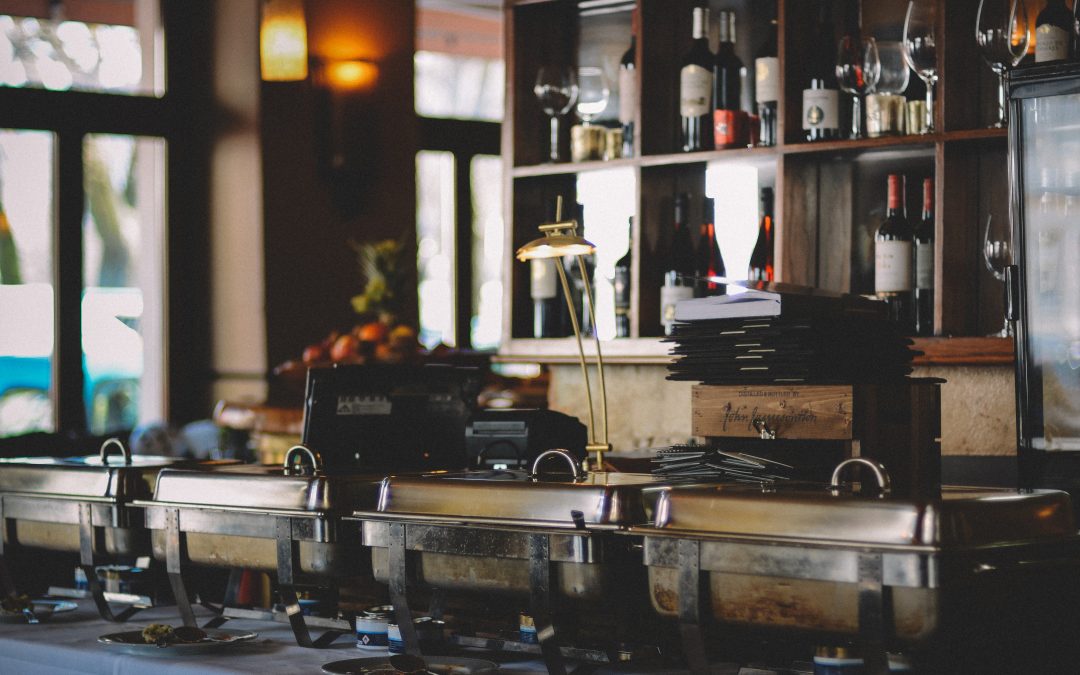For some industries, like cinemas, catering provides the bulk of the profit margins. But frequently, catering for golf clubs has become an afterthought. Even worse, for some clubs catering is a financial ulcer, a slow but steady drain on the club’s finances. But catering shouldn’t just be something a club offers its members, it should be an actual source of revenue, and with a few simple changes, it can be.
The main difference between catering for golf clubs compared to other sports is what you are actually serving. It’s much harder to pivot away from traditional foods and alcohol towards modern sports nutrition. Both competitive and hobbyist golfers are far more attached to their traditional meal approach – a few pints and some meaty, savoury dishes. This can be an asset however since it allows you to get more out of your catering in terms of revenue. So why do so many clubs struggle with catering?
Catering for Golf Clubs – Dead Weight
The primary reason catering has become a deadweight to many clubs is that prices tend to be extremely low. The social power of the membership often acted throughout the years as a dampening force that kept the prices of food and drink that the club served largely static in the face of inflation.
As a result golf clubs have failed to cost and price their dishes appropriately. Gradually profit margins for each menu item were squeezed almost to the break-even point. Clubs will sometimes even lose money on some dishes.
In the past where revenue from memberships was very strong, this was not a concern. At worst, losing money on catering was just providing another perk to members. But over the years golf clubs have started to look to other revenue streams in the wake of lagging memberships. This throws the unnecessary losses incurred by subsidizing dishes into sharper relief.
Catering for Golf Clubs – Social Events
A poorly managed catering approach can also severely hamper the ability of a club to capitalise on other opportunities. At Mango Golf, we believe clubs can really benefit from using their space to host events such as weddings, birthday parties, social gatherings, etc. But if a club is losing money on catering but trying to compensate with membership revenue, then they are likely to not benefit much at all from putting on catered events for non-members.
Social events can often include much heavier expenses in terms of presentation per head. Seemingly minor things like tablecloths, napkins, as well as wastage on silverware and glassware, can magnify losses if you are still not breaking even on your food.
Managing portion sizes, driving down costs, and charging full market prices – or potentially a little more – can turn your bar from a millstone into a gold-mine. So long as the food you serve is high quality then members will have little to complain about. In addition, working with slim margins for each menu item means that deals become very difficult to implement. Expanding profit margins can give you room to offer other deals to keep members happy.
Catering for Golf Clubs – Franchising
It is possible for golf clubs to outsource their catering by franchising. This involves letting an outside party take care of that for the club in return for keeping the profits generated. Franchising does allow for a guaranteed cost-neutral approach to catering. If all else fails and the franchisee cannot turn a profit themselves then catering will simply revert to the club. For general managers who are uncomfortable with handling catering, franchising may seem appealing.
However, there are several downsides to franchising catering. Losing the ability to control your own food and drink makes it harder to influence a club in a given direction. Some clubs like the Royal Norwich went out of their way to make branded club gins. It was a long-term strategy that carried risk but when it paid off it helped secure the club’s future.
Ironically, the best way for most clubs to modernise their catering is to appeal to nostalgia. You will not be able to compete with major restaurants in terms of economies of scale. However, customers will pay more for food that includes excellent service, atmosphere and a view of a well-manicured green, which golf clubs are primed to provide.
Franchising limits the possibility of losses, but you also restrict your club from maximising profits. Nowadays it’s simply not viable for most golf clubs to lose out on money like that. At Mango Golf, we believe that clubs can and should do more to access revenue streams, become an asset to the community, and ensure their future operations. Catering can be a vital part of setting the table for that transformation.


Recent Comments